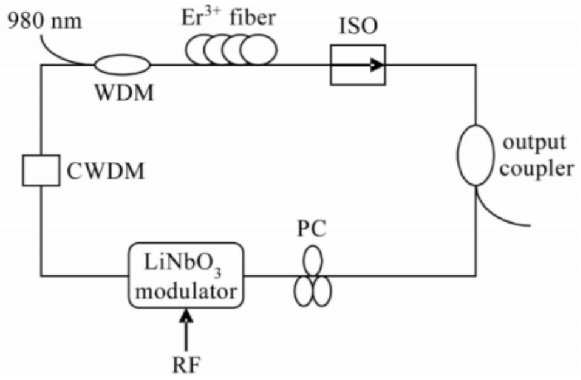Lithiumniobaat staat ook bekend als optisch silicium. Er bestaat een gezegde dat luidt: "Lithiumniobaat is voor optische communicatie wat silicium is voor halfgeleiders." Het belang van silicium in de elektronicarevolutie, maar waarom is de industrie zo optimistisch over lithiumniobaatmaterialen?
Lithiumniobaat (LiNbO3) staat in de industrie bekend als "optisch silicium". Naast natuurlijke voordelen zoals een goede fysische en chemische stabiliteit, een breed optisch transparant venster (0,4 m ~ 5 m) en een hoge elektro-optische coëfficiënt (33 = 27 pm/V), is lithiumniobaat ook een soort kristal met een ruime bron aan grondstoffen en een lage prijs. Het wordt veel gebruikt in hoogwaardige filters, elektro-optische apparaten, holografische opslag, 3D-holografische displays, niet-lineaire optische apparaten, optische kwantumcommunicatie, enzovoort. Op het gebied van optische communicatie speelt lithiumniobaat voornamelijk een rol bij lichtmodulatie en is het uitgegroeid tot een mainstream product in de huidige snelle elektro-optische modulatoren.Eo-modulator) markt.
Momenteel zijn er drie hoofdtechnologieën voor lichtmodulatie in de industrie: elektro-optische modulatoren (Eo-modulator) op basis van siliciumlicht, indiumfosfide enlithiumniobaatMateriaalplatforms. Optische siliciummodulatoren worden voornamelijk gebruikt in transceivermodules voor datacommunicatie met een kort bereik, indiumfosfidemodulatoren worden voornamelijk gebruikt in transceivermodules voor optische communicatienetwerken met een middellang en lang bereik, en lithiumniobaat elektro-optische modulatoren (Eo-modulatoren) worden voornamelijk gebruikt in coherente communicatie over lange afstanden in backbonenetwerken en enkelgolf 100/200 Gbps ultrasnelle datacenters. Van de drie bovengenoemde materiaalplatforms voor ultrasnelle modulatoren heeft de dunnefilm-lithiumniobaatmodulator, die de afgelopen jaren is ontstaan, een bandbreedtevoordeel dat andere materialen niet kunnen evenaren.
Lithiumniobaat is een soort anorganische stof, chemische formuleLiNbO3, is een negatief kristal, ferro-elektrisch kristal, gepolariseerd lithiumniobaatkristal met piëzo-elektrische, ferro-elektrische, foto-elektrische, niet-lineaire optische, thermo-elektrische en andere materiaaleigenschappen, en tegelijkertijd met een fotorefractief effect. Lithiumniobaatkristal is een van de meest gebruikte nieuwe anorganische materialen en is een goed materiaal voor piëzo-elektrische energie-uitwisseling, ferro-elektrisch materiaal en elektro-optisch materiaal. Lithiumniobaat speelt als elektro-optisch materiaal in optische communicatie een rol bij lichtmodulatie.
Het lithiumniobaatmateriaal, bekend als "optisch silicium", maakt gebruik van het nieuwste micro-nanoproces om de siliciumdioxidelaag (SiO2) op het siliciumsubstraat te stomen, het lithiumniobaatsubstraat bij hoge temperatuur te verbinden om een splijtoppervlak te creëren en uiteindelijk de lithiumniobaatfilm af te pellen. De geprepareerde dunnefilm-lithiumniobaatmodulator biedt de voordelen van hoge prestaties, lage kosten, een klein formaat, massaproductie en compatibiliteit met CMOS-technologie, en is een concurrerende oplossing voor snelle optische interconnectie in de toekomst.
Als het centrum van de elektronische revolutie vernoemd is naar het siliciummateriaal dat dit mogelijk maakte, dan kan de fotonische revolutie worden herleid tot het materiaal lithiumniobaat, bekend als "optisch silicium". Lithiumniobaat is een kleurloos, transparant materiaal dat fotorefractieve effecten, niet-lineaire effecten, elektro-optische effecten, akoestisch-optische effecten, piëzo-elektrische effecten en thermische effecten combineert. Veel van de eigenschappen ervan kunnen worden beïnvloed door de kristalsamenstelling, elementdoping, valentiecontrole en andere factoren. Het wordt veel gebruikt voor de productie van optische golfgeleiders, optische schakelaars en piëzo-elektrische modulatoren.elektro-optische modulator, tweede-harmonische generator, laserfrequentievermenigvuldiger en andere producten. In de optische communicatie-industrie zijn modulatoren een belangrijke toepassingsmarkt voor lithiumniobaat.
Plaatsingstijd: 24-10-2023






